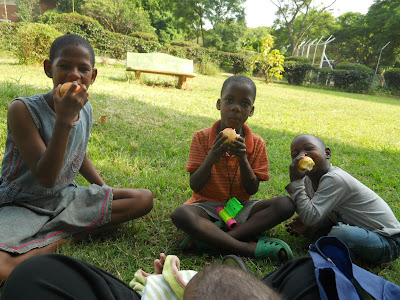
Geography is on my mind.
We have been busy this week trying to pack and prepare for our spring/"fall" break. Confusing? Yes, I agree. Preparing for our upcoming African travels has reminded us of previous conversations we've had with our American cohorts about Africa...
When we first called our family and friends a year ago to tell them the news that we were moving to Africa, we were met with three responses.
Response One, mostly from the adventurous souls in our life: "WOW! Can I come visit?!" An excited congratulations is then followed by discussions of bucket lists and how they have always wanted to go to Africa. They must take advantage while they know someone there.
Response Two, mostly from family who will never visit us: "Have you ever been there before?" These are the people who thought we would be eaten by lions within the first three months. (Never mind that we were hit by a car. No, I have not come even close to a lion bite.)
Response Three, mostly from the most honest souls in our life: "Where is Zimbabwe?"
Indeed we learned a lot about our loved ones and their geographical perspectives when we decided to move here. Though Kurt and I were both raised being told that we could go anywhere and do anything, it was clear no one really expected it to happen. And when we first relocated to New York City out of the Midwest, there were a number of people in our lives who acted as though we had moved to a foreign country, unreachable on the other side of the world. And surely we must have thought we were better than those we had left behind.
Of course, when Kurt and I relocated to the East Coast, we expected to find a NYC full of multicultural experts, able to ace any geography quiz. In such a diverse city we were shocked and schooled to find that, although there were some globally savy people, there were also many city dwellers that could tell you twelve ways to get to Times Square, but could not point to the state of Iowa on a map.
As we continue making our plans for what to see while we are on this continent for the next three years, Jonas' developing perspective is on my mind. Kurt and I both know a number of people that have no desire to travel outside of the US, whether they have loved ones abroad or not. And though we respect their feelings as we learn more about this crazy evolution called "perspective", our time abroad continues to remind me of one very important thing: Never do we want our child to feel limited in his options, scared of what unknowns the world holds, or uninterested in the value of discovering other perspectives. If our travels do nothing else, we want to ingrain in Jonas a sense of adventure and possibility.
Jonas can go anywhere and do anything. Not just saying that, Jonas. Seriously.
Stick with us and watch another African road trip unfold, starting this week...







































